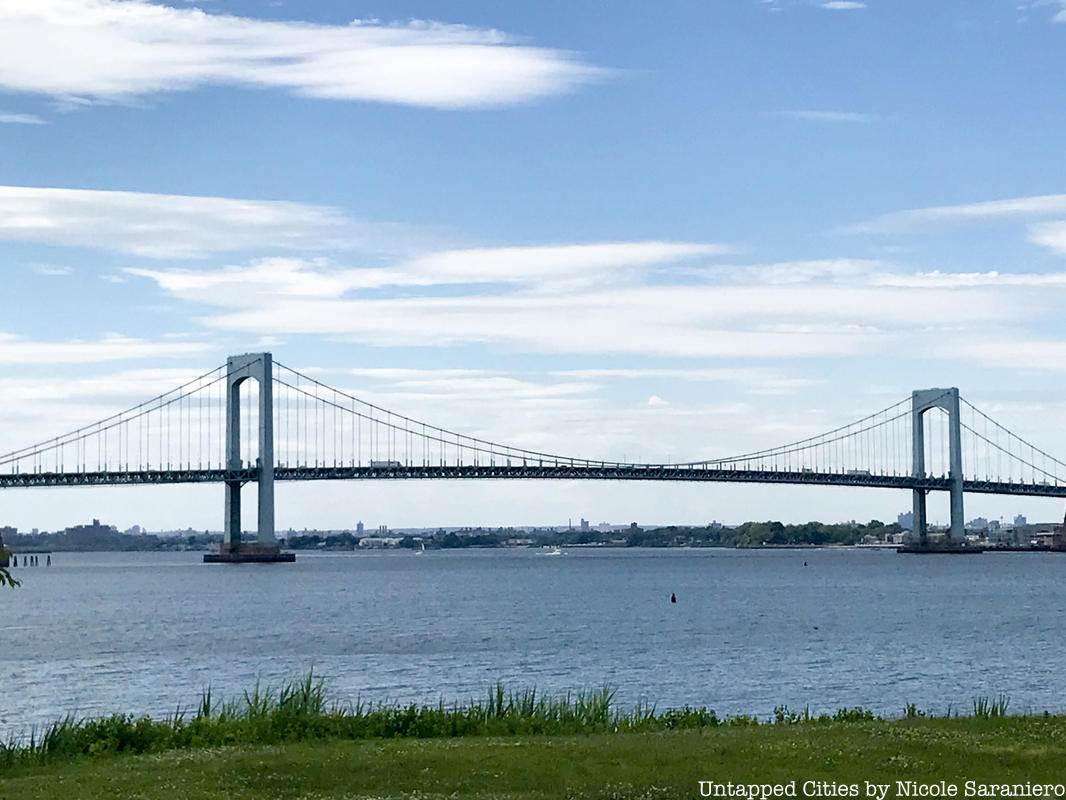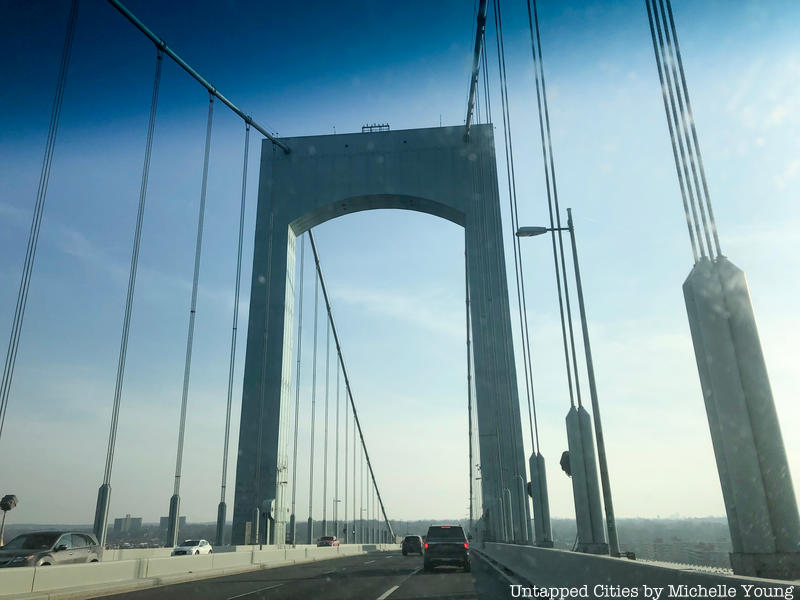 The Throgs Neck Bridge with a Peregrine falcon overhead.
The Throgs Neck Bridge with a Peregrine falcon overhead.
Since it first opened to traffic in 1961, the Throgs Neck Bridge has served as a vital link between the Bronx and Queens. Today, amidst all the congestion so characteristic to New York City, the span helps carry over 100,000 vehicles to and from their destinations every day. It might not be the most aesthetic bridge, like the Bronx-Whitestone, located two miles to the west, but it’s still has a place in the hearts of many New Yorkers who would otherwise be twiddling their thumbs on the Triborough or the Whitestone.
10. Robert Moses Spelled ‘Throgs Neck’ With One ‘G’ to Save Money

The Throgs Neck Bridge connects the Throggs Neck section of the Bronx to the Bay Terrace in Queens. The name “Throg’s Neck” or “Throggs Neck” is derived from John Throckmorton, who established his colony in the area in 1643. In referencing the land, both spellings of the name, with either one of two “G’s,” are accepted. However, the older and more established residents (pre-1960’s) generally tend to go for two “G’s.”
On the other hand, the Throgs Neck Bridge is definitely spelled with one “G” thanks to master builder, Robert Moses, who wanted to save money with sign costs. According to Bronx Historian, Lloyd Ultan, the name change meant less paint had to be used on all the signs.





